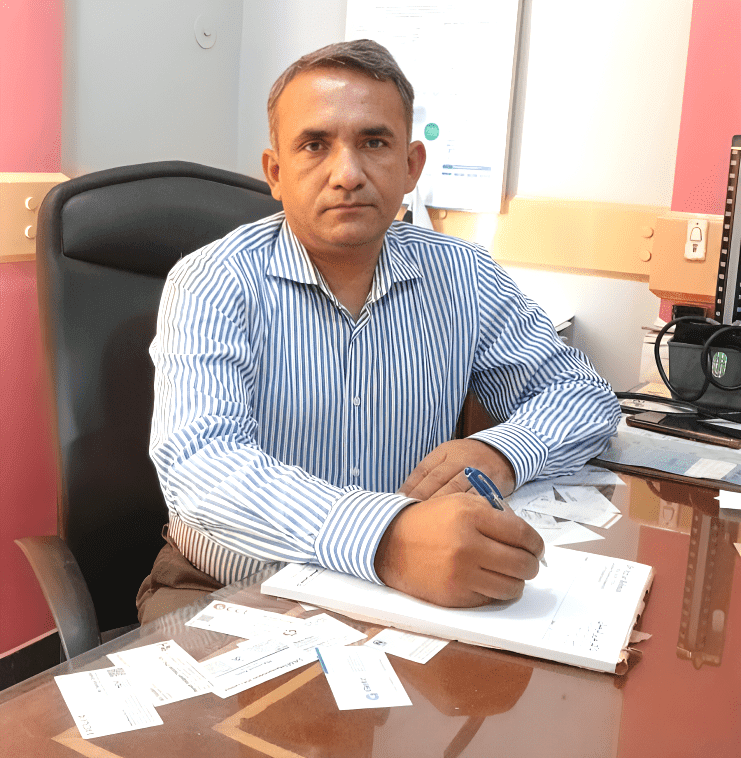Dr. Aziz Ur Rehman
Specializing in Hepatology & Gastroenterology
Bringing extensive knowledge and experience to address liver and digestive system health with precision and compassion.

Doctors Timetable
Dr.Aziz is available Monday to Thursday in Taj Medical Complex, view timetable to make an appointment.
Opening hours
Visit Dr.Aziz Clinic for a consulting at office hours.
Mon – Thurs 02:00Pm – 05:00PM

Welcome to Dr. Aziz Ur Rehman Website
A warm greeting to you on Dr. Aziz-ur-Rehman’s official website. Dedicated to providing exceptional healthcare, Dr. Aziz-ur-Rehman combines expertise with a patient-centric approach. Explore services, resources and stay informed about the latest in medical advancements. Your well-being is our priority.
- No Waiting Time
- Free Consultancy for New Customers (Only Saturday)
- Quick Response
What Make Dr. Aziz Best Among Others?
Our patients have praised us for our service, and we have been recognized with national .
Years of Operations
Specialist
Awards
Patients Recovered
Services of Dr.Aziz
Dr. Aziz is one of the best doctor in town, with 10+ years of experince he is serving to community since long time.
Stomach Disorder
Dr. Aziz ur Rehman is able to identify these problems after evaluating the patient and provide alternative solutions mainly encompassing; the use of drugs, changing of diet as well as the individuals’ way of life to control or relieve symptoms.
Liver Disorder
Dr. Aziz provides total care for Liver with a focus on liver diseases, transplantation, hepatitis, cirrhosis and cancer management. This has advanced medical knowledge, and is dedicated to the patient.
Intestine Disorder
Dr. Azizur Rehman, specialist in every type of intestinal disorder such as IBS, IBD or celiac disease. he is dedicated to enhancing the intestinal health as well as targeting the patient’s clinical outcomes
Why Choose Dr.Aziz
Dr. Aziz ur rehman is expert in gastroenterologist and hepatologist he delivers comprehensive care for digestive and liver health he ensures optimal digestive health with personalized care and advanced expertise.
Free Consultancy
First Free Check-up for New Patients
(Only Saturday)
Stomach Disorder
The focus of Dr. Aziz ur Rehman’s practice is the diagnosis and management of the stomach ailments like gastritis, peptic ulcer and gastro-esophageal reflux disease.
Head of Gastroenterology
Dr. Aziz also serves in Civil Hospital ?Karachi as a Head of Gastroenterology department.

No Waiting Time
Maximum Waiting Time in Dr. Aziz Chamber approx 15 minutes
Liver Disorder
In the area of hepatology, Dr. Aziz ur Rehman specializes in the diagnosis and treatment of diseases of the liver, such as hepatitis, fatty liver and liver cirrhosis.
Intestine Disorder
Irritable bowel syndrome (IBS), inflammatory bowel disease (IBD) and celiac disease are all intestinal disorders which are effectively managed by Dr. Aziz ur Rehman.
Patient Reviews
I had a great consultation with leading hepatologist Dr. Aziz Ur Rehman in Karachi recently. His knowledge and kind attitude made me feel cared for during my therapy. The personnel at the clinic were proficient and well-mannered. I heartily advise anyone looking for a hepatologist in Karachi.
I had the privilege of being under the care of Dr. Aziz ur Rehman for a liver condition, and I can confidently say he is a true hepatology expert. His in-depth knowledge of liver diseases is evident, and he takes the time to explain complex medical concepts in a way that is easy to understand. Dr. Aziz's commitment to patient well-being and his comprehensive approach to treatment make him an outstanding hepatologist.
Dr. Aziz Ur Rehman is truly a top-rated hepatologist. His deep knowledge of liver diseases and commitment to patient well-being stood out during my consultation. The comprehensive approach to diagnosis and the clear explanation of treatment options were invaluable. The hepatology team's professionalism and dedication to patient care make this service exceptional.
My journey with Prof. Aziz ur Rehman has been marked by unparalleled expertise and compassionate care. As a liver specialist, Prof. Rehman's diagnostic precision and commitment to patient well-being are truly commendable. Her ability to navigate complex liver conditions with a holistic approach places her among the very best liver doctors in Pakistan.

